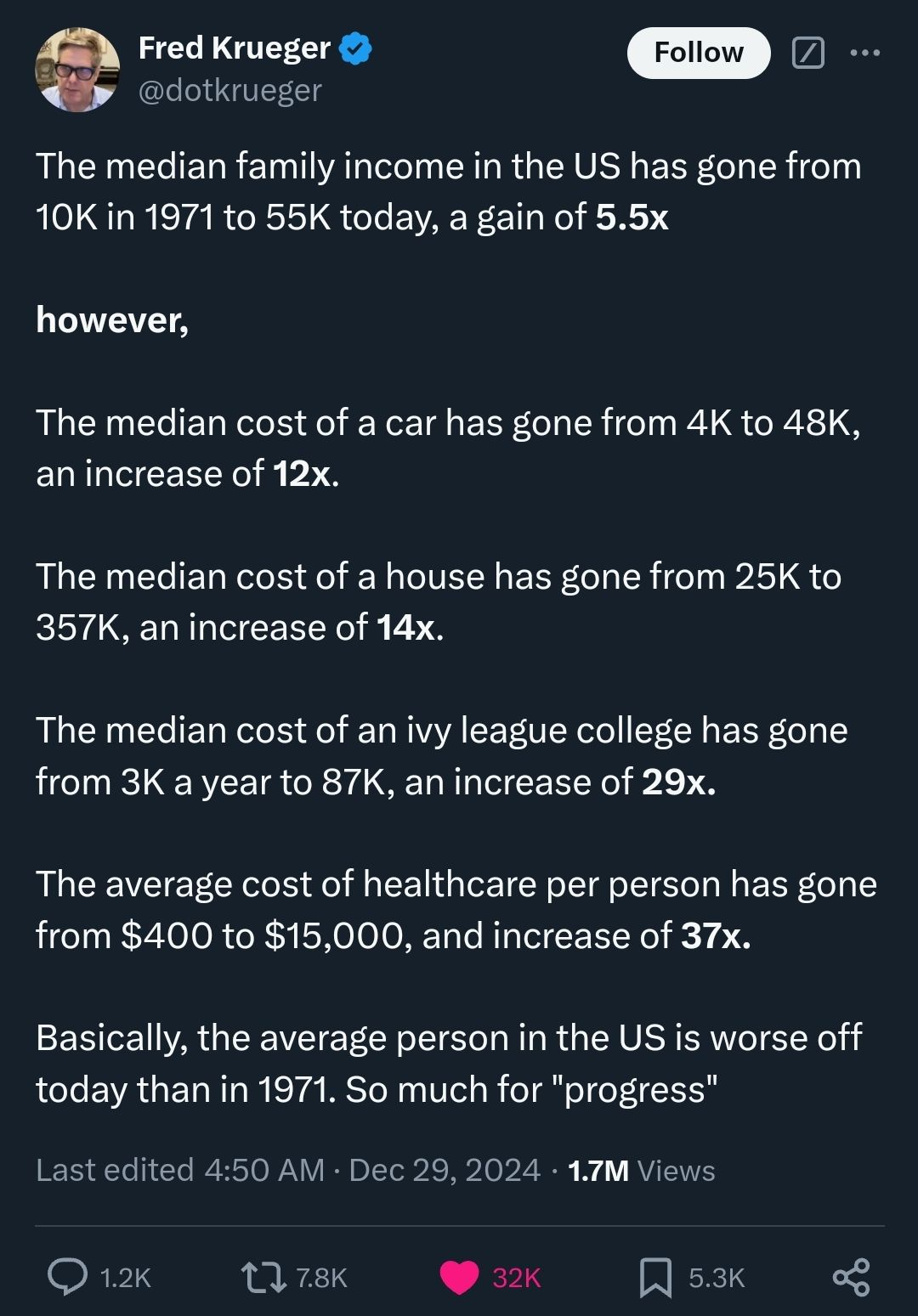this post was submitted on 30 Dec 2024
1500 points (98.8% liked)
Microblog Memes
6120 readers
1474 users here now
A place to share screenshots of Microblog posts, whether from Mastodon, tumblr, ~~Twitter~~ X, KBin, Threads or elsewhere.
Created as an evolution of White People Twitter and other tweet-capture subreddits.
Rules:
- Please put at least one word relevant to the post in the post title.
- Be nice.
- No advertising, brand promotion or guerilla marketing.
- Posters are encouraged to link to the toot or tweet etc in the description of posts.
Related communities:
founded 2 years ago
MODERATORS
you are viewing a single comment's thread
view the rest of the comments
view the rest of the comments

Wouldn't the natural interpretation here be that people are forced to use cars for longer due to higher prices? In the 70s it was possible to replace your car more often.
I'd argue that back then it was obsolescence, probably even planned obsolescence. The Japanese automakers came in and disrupted the assumptions in Detroit, by building more reliable, more efficient, and longer lasting cars. Even if you wanted to keep a 1971 Buick for 10 years it would be difficult to do so economically, as rust started forming and the drivetrain started acting up.
And then in the 80's, facing pressure from foreign automakers, American automakers finally started taking quality control and reliability more seriously. Still, though, they've basically always been behind Toyota.
And you can see the difference in the used auto market. Back then, the older cars were sold for scrap. If they were still functional and economically feasible to run, they would've been sold to someone.
Some people can (and do) still buy new and replace every 3 years. The increase longevity actually ends up helping them with resale value on the back end of their ownership.